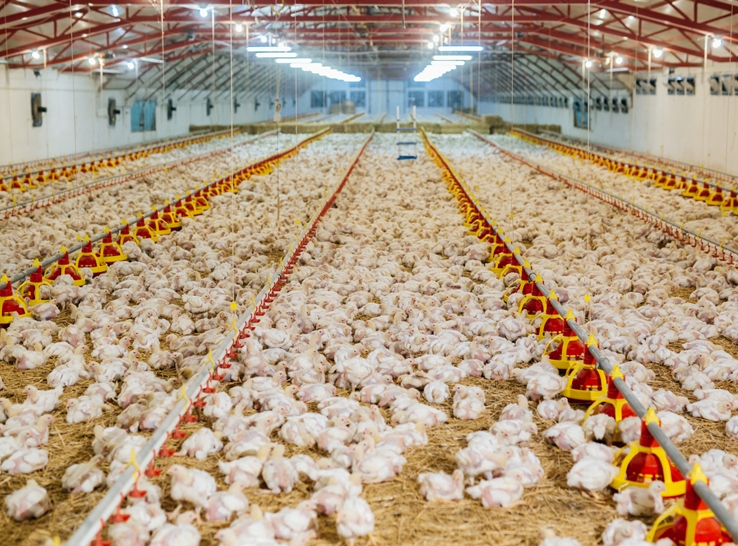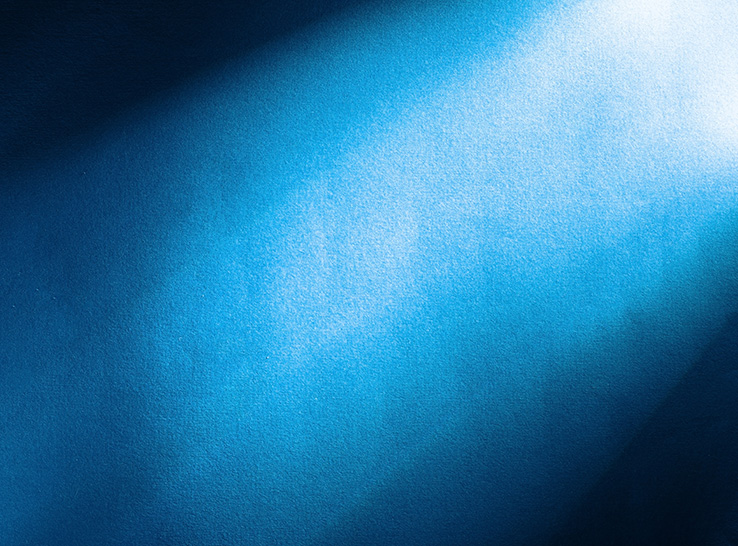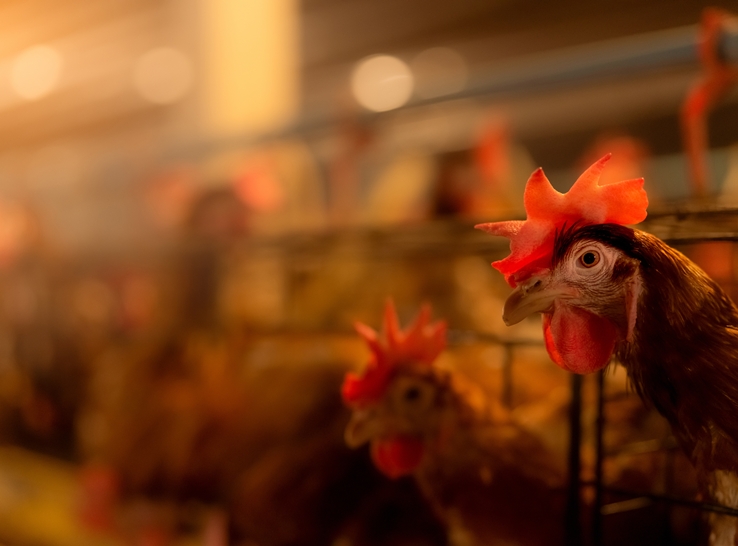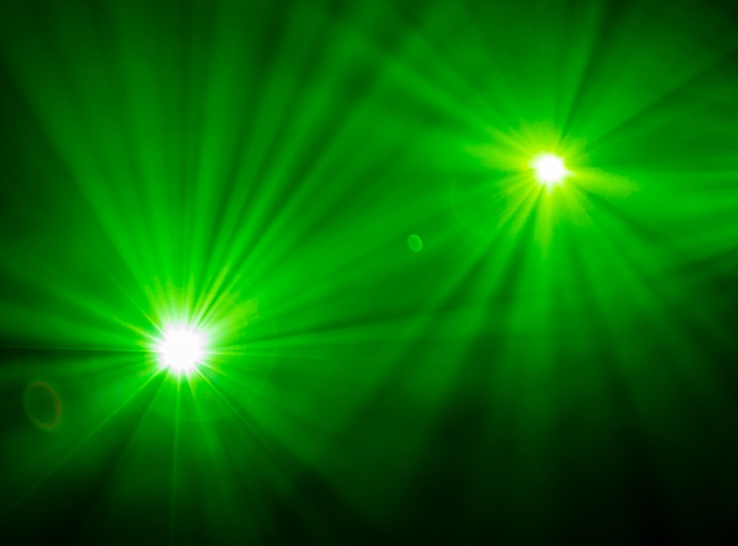A large-scale study has shown that blue lighting (peak 455 nanometers wavelength) in broiler houses significantly alters bird activity and reduces stress. However, this doesn’t seem to impact production, and implementing it has its own challenges.
The work, conducted by a team at the University of Saskatchewan, involved placing groups totaling 14,000 broilers under blue, green and white lights and testing for a range of production, behavior and welfare parameters.
Karen Schwean-Lardner, PhD, who led the research team, reported the study results at the 2024 Center for Food Animal Wellbeing symposium.
Study findings
Birds under the blue light spent significantly longer time at the feeder and were significantly less active, but these behaviors didn’t translate into significant differences in bodyweight, gait scoring or musculoskeletal issues. Birds also foraged more under blue light.
In two fear tests — tonic immobility and novel object — the birds under blue light scored significantly lower than under the other light treatments. In a heterophil/lymphocyte blood test, which measures stress in birds, the scores were again significantly lower for the birds under blue light.
The research team also conducted sight tests, recording that the blue-light-treated birds could reach the correct feeder faster than birds under the other light treatments. Historically, it was believed that broiler chickens could not see at all under blue light, but evidence in this study has proved otherwise.
Despite the clear findings around fear and stress between the lighting groups, the team recorded no significant differences between the groups when analyzing the production parameters of bodyweight, feed intake, feed efficiency or mortality if light intensity was similar between treatments.
Case for reducing stress
“I always talk about linear additivity of stressors. One stress in your life is probably okay. Two, you’re probably pretty good. More than that, and life is tough,” Schwean-Lardner said.
“There may be a benefit to reducing stressors wherever you can, even in commercial production systems, and using these blue light bulbs might do that.”
The research team is now carrying out functional magnetic resonance imaging to establish exactly why blue light reduces stress in the birds.
“For farms with higher stress levels in birds, implementing blue light could be something to consider. The improvement in bird vision is also an improvement in bird welfare,” she noted.
Reality of blue lighting
The practicalities of switching to blue light may be off-putting, however. Schwean-Lardner reported that her team experienced challenges working under blue light because they couldn’t see very well. There could also be increased problems in finding cull birds.
“Probably the most important welfare task we can do with flocks is to cull them at an appropriate time. I’m not sure you’re going to do that with changing to this blue color,” she said, stressing that “we shouldn’t forget about big pictures and unintended consequences.”
The system used in the research is already being applied in some slaughter plants, and there is considerable interest from hatcheries.
For many large grow-out facilities, Schwean-Lardner added, the negatives could well outweigh the positives, but there could be a case for dual systems with a shift from blue to more regular light wavelengths when caretaking.







